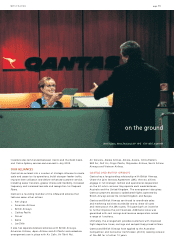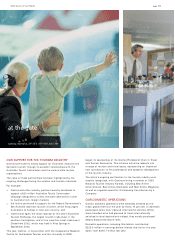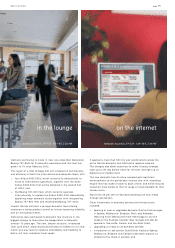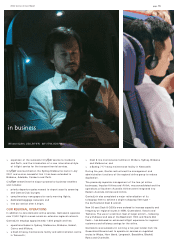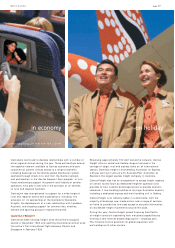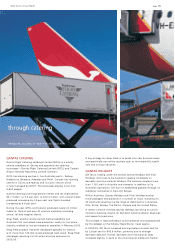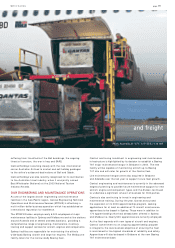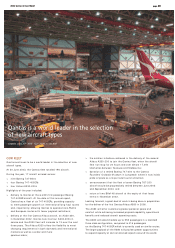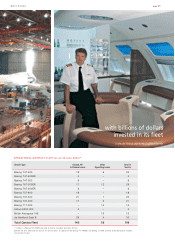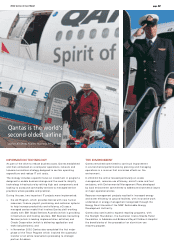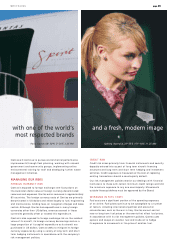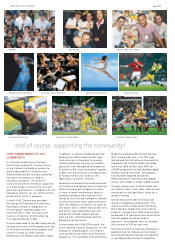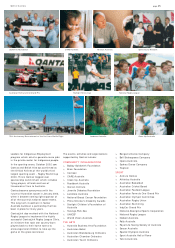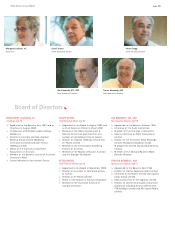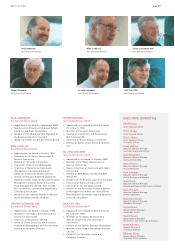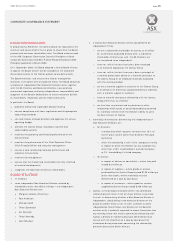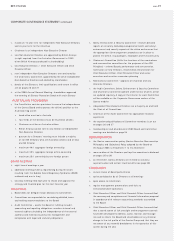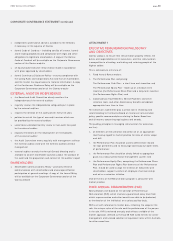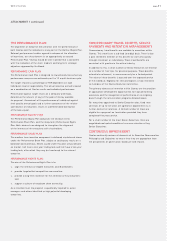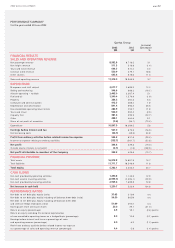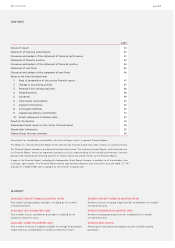Qantas 2003 Annual Report Download - page 25
Download and view the complete annual report
Please find page 25 of the 2003 Qantas annual report below. You can navigate through the pages in the report by either clicking on the pages listed below, or by using the keyword search tool below to find specific information within the annual report.
page 23
with one of the world‘s
most respected brands
and a fresh, modern image
Paris, France_48º 50‘N 2º 20‘E_1.35 PM Sydney, Australia_33º 53‘S 151º 10‘E_11.25 AM
Qantas will continue to pursue environmental performance
improvements through fleet planning, working with relevant
government and community groups, implementing online
environmental training for staff and developing further waste
management initiatives.
MANAGING OUR RISKS
FOREIGN CURRENCY RISK
Qantas is exposed to foreign exchange rate fluctuations on
the Australian dollar value of foreign currency denominated
revenues and expenses. Qantas earns revenues in approximately
80 countries. The foreign currency costs of Qantas are primarily
denominated in US dollars and relate largely to fuel, engineering
and maintenance, landing fees, air navigation charges and lease
rentals. Although Qantas has expenditures in many foreign
currencies other than US dollars, revenues earned in those
currencies generally offset or exceed this expenditure.
Qantas is also exposed to foreign exchange risk on the residual
value of its aircraft, its foreign currency borrowings and on a
large proportion of its capital expenditure as its aircraft are
purchased in US dollars. Qantas seeks to mitigate its foreign
currency exposures by using a variety of long term and short
term hedging instruments in accordance with the company’s
risk management policies.
CREDIT RISK
Credit risk arises primarily from financial instruments and security
deposits entered into as part of long term aircraft financing
structures and long term and short term hedging and investment
activities. Credit exposure is measured as the cost of replacing
existing transactions should a counterparty default.
Our risk management policies restrict our dealings with financial
institutions to those with certain minimum credit ratings and limit
the maximum exposure to any one counterparty. Movements
outside these guidelines must be approved by the Board.
INCREASES IN FUEL COSTS
Fuel costs are a significant portion of the operating expenses
of an airline. Fuel prices continue to be susceptible to a number
of factors, including international political and economic
circumstances, such as the war in Iraq. Qantas cannot control
near or long term fuel prices or the events that affect fuel prices.
In accordance with its risk management policies, Qantas uses
options and swaps on aviation fuel and crude oil to hedge
its exposure to movements in the price of aviation fuel.
page 23
Spirit of Australia page 23


